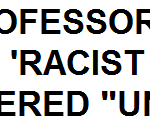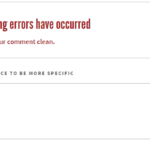My boyfriend signed up for an Economics class last semester that had a professor who was described by other students on Rate My Professors as “a little offensive but still funny” and “you will still learn if you do the work and attend his workshops.” On the first day of class, he pointed to an Asian girl next to him.
“Are you Chinese?” he asked.
She looked bewildered and said, “Yes…?”
“How do you feel about the One Child Policy?”
The entire class went silent.
She glared at him, “I’m American.”
He shrugged it off, “Yeah, but you’re Chinese. So how do you feel about being the only child in your family?”
When I peruse through class lists, one of the very first things I want to know is whether or not I will be in a safe environment with a professor who cares about their students. Rate My Professors is the most commonly used tool for students to decide whether or not a professor is right for their learning style. It’s a tool for students created by students. But when such tools actively work against students who want to give proper warning about professors, what does that tell you? Does RMP care about student safety? Or is it doing everything in its power to protect corrupt educators? Should students compile a list of corrupt professors to combat RMP’s new policy if they don’t reverse this rule?
The Chinese woman and the rest of the students had to endure a semester filled with violent racist, sexist, and classist rhetoric (he later humiliated a student for 15 minutes for having an old Ford—what he described as a “loser car”) with a professor who only taught outside of class hours instead of during class hours. There are many more stories like this one because students pay for a class they weren’t expecting.
Because students can’t say “racist and sexist”, people have opted for “problematic” with examples as well as synonyms. You can contact them here to ask them to change their policy.

Just another WordPress site

